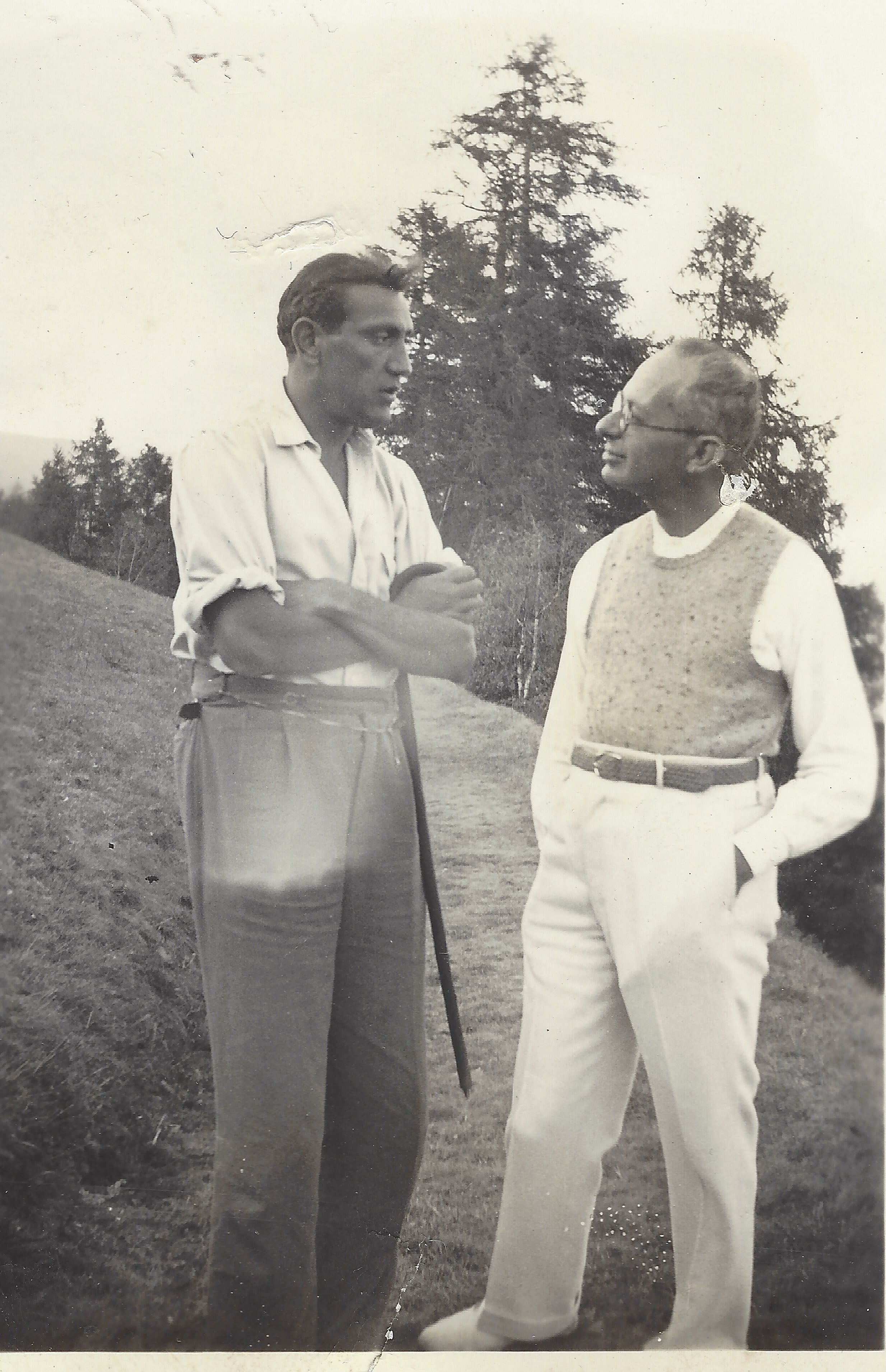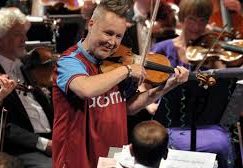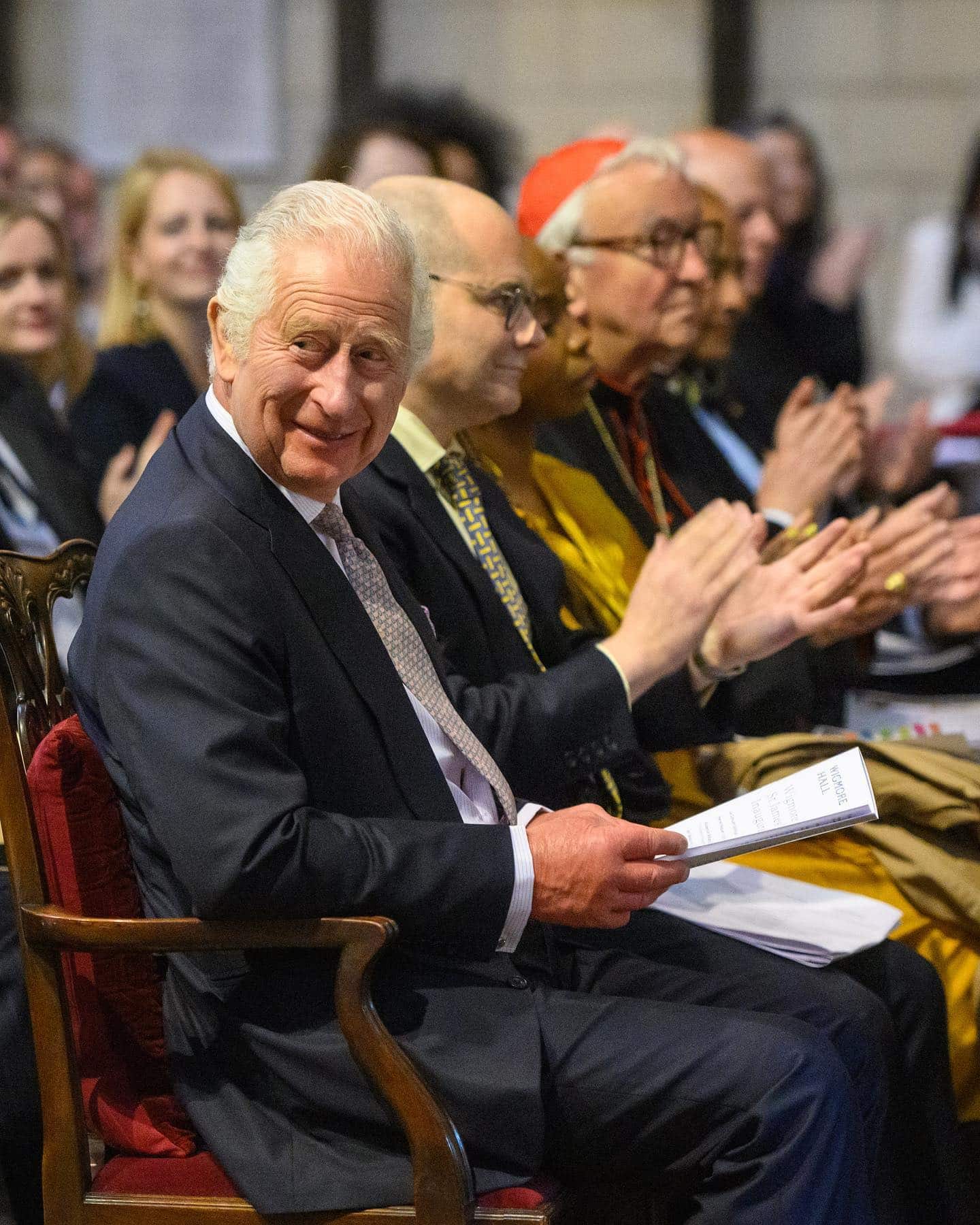Master and commissioner: How a cellist got his dream concerto
mainA recording of Mario Castelnuovo-Tedesco’s long-lost cello concerto is released this weekend on Naxos. Its soloist Brinton Smith tells us how it came about.
Mario Castelnuovo-Tedesco relates that Piatigorsky asked him, ‘Castelnuovo, a great many cellists play your works as well as I do, but nobody loves them as much. Write a concerto for me!’

In 1933 Mario obliged. Piatigorsky and Toscanini were companions on the SS Rex en route to Italy and spent their evenings together, regaling each other until sunup when Piatigorsky was finally forced to yield to the Maestro’s superior stamina and excuse himself for bed. In one of these late-night conversations Piatigorsky mentioned a new concerto by Castelnuovo-Tedesco. Toscanini immediately demanded the score, retired with it for the night, and returned with it at seven the next morning. He stormed through the door of Piatigorsky’s cabin waving the manuscript in his face. “The double-stops in the second movement must go and in one place the winds are too thickly orchestrated. But it is good- good!” he muttered, pouring out a stream of minute analysis and comment. The cellist recalled the scene with awe. ‘Only a few hours before he had set his eyes on the music for the first time and there he was, with the entire score at his fingertips. While I. who had worked on it the entire trip knew little more than my part.’
Toscanini programmed the premiere with Piatigorsky and the New York Philharmonic in Carnegie Hall on January 31, 1935. Piatigorsky recalled his first piano rehearsal with Toscanini: Maestro at the piano, we began the concerto. Glancing at his score, I noticed that the cello part was virtually covered with pencilled fingerings and bowings. No cellist except me had seen the concerto. Surprised, I asked who had made the markings, “I did,” said Maestro, “Why?” “Did you forget I was a cellist?” he said, smiling, “One does hear fingerings and bowings, and I wanted to know if yours would be the same as mine” Maestro banged on the piano in a true Kapellmeister manner. He spoke and he sang and his spontaneity and vigor carried me away. By the end of our long and exhilarating session, I had miraculously regained my strength.. Piatigorsky also recalled sharing the Carnegie Hall Green room with Toscanini: The conductor quickly paced the room, cursing and mumbling to himself. It was impossible for Piatigorsky to warm up and concentrate, and he stopped practicing. Toscanini looked at him and cursed “You are no good!…I am no good!” and continued to pace. Piatigorsky begged “Please Maestro, I will be a complete wreck.” But when Toscanini came to the wings to collect Piatigorsky for the concerto, he said to the Maestro “We are no good…but the others are worse! Come on, caro, let’s go!”
Reviews of the premiere were mixed, with some praising the concerto’s tunefulness while others dismissed its traditional melodic values and tonal language. Piatigorsky performed the concerto a few more times in Europe, and critics continued to split between praising it and condemning it as ‘old fashioned’ (Korngold’s music was similarly dismissed, as was Rachmaninoff’s). Piatigorsky was active in commissioning for his instrument but, unlike Heifetz, he rarely devoted great energies to promoting any of these commissions once they had been premiered, and quickly moved on to new projects. Castelnuovo-Tedesco insisted that Piatigorsky alone have the performing rights, and, with the work never having been recorded and the music available only by rental, it quickly lapsed into obscurity.
I first read about the concerto as a boy in Piatigorsky’s autobiography Cellist, and was already searching for it as a student at Juilliard. Finally, in the Fall of 2015, I connected with the proper rental agency and received a trial score. The only way to discover what it sounded like was to learn it and play it with the piano reduction! It was a new experience for me to learn an 85 year old score with no recording to reference, no metronome marks, and no ability to ask the composer-only musical intuition and general descriptive markings to go by. Our primary goal was always to bring the piece back before an audience, rather than to record it, but the generosity and interest of Klaus Heymann at Naxos allowed us to do both, However we did not have the safety of the typical post-concert ‘live recording’ patch session, which added another level of stress, given that the 30 minute concerto with its extended double cadenzas, is the most virtuosically demanding I have ever performed. We were particularly pleased to be joined at the last performance by all four of Castelnuovo-Tedesco’s grandchildren and their families. With Castelnuovo’s cello and piano music well covered in the recording catalogs, we opted to fill the remainder of the disc with his transcriptions, many recorded for the first time ever, of Mozart, Ravel and Rossini which Mario made in his very free and personal manner for Piatigorsky and Heifetz (the latter ‘de-ranged’ by me for the cello) .
Although the concerto had remained unperformed and unrecorded for over 80 years, the recent revival of interest in his music and the 50 year anniversary of his death this year have brought forth two other recorded version of the concerto in the last 6 months, by Raphael Wallfisch and Silvia Chiesa, so perhaps the work will finally find a foothold in the repertoire. As we re-evaluate the merit of works by once disdained composers like Korngold, Castelnuovo’s reputation as a classical composer is also on the rise. It is certainly true that something doesn’t have to sound beautiful to be great art, but simply because it sounds beautiful doesn’t necessarily mean it isn’t art, either. If we fail to advocate for repertoire simply because it doesn’t equal the profundidty of a Beethoven Symphony or the Brahms violin concerto, we risk hobbling our art with an ever-shrinking spiral of repertoire that we perform for the public. Living with this Castelnuovo-Tedesco work has given me a deeper appreciation for the quality and beauty of his compositions and I hope you will find the same.





Thanks so much for the interest Norman. All quotes in the article come from Cellist by Gregor Piatigorsky and Gregor Piatigorsky: The Life and Career of the Virtuoso Cellist, a fantastic biography by Terry King. Thanks
Beautifl story. And crazy critics who had fallen for the progressive narrative.
It’s just an opinion, but I think Castelnuovo-Tedesco is a marvelous composer. I look forward to hearing this.
C-T never disappoints. Can’t wait to hear it.
John Martin’s opinion of the C-T concerto: https://youtu.be/0ErDge-v9mg?t=15m46s (@15:46)
I personally have never heard the piece, but I’m sure Brinton does a fantastic job on the recording!
Thanks,. Martin’s dismissal of C T as a “Hollywood” composer is fairly typical of his generation, but to me what’s more interesting is the fact that Piatigorsky thought enough of the piece to make his students learn it even though he was no longer performing it. I wouldn’t have expected that… (Though of course it could also have been partly for the insane technical demands.) Well, either way, at least people will have a chance to decide for themselves now… Cheers
His first violin concerto was also given its first recording recently. I fully expect that this cello concerto will also be very fine and am looking forward to hearing it. With attention to composers like this, the full range of our 20th Century classical music heritage continues to come into truer focus, one work at a time. At the same time, the serious musical limitations of the old revolutionary narrative become more glaring with every passing year.